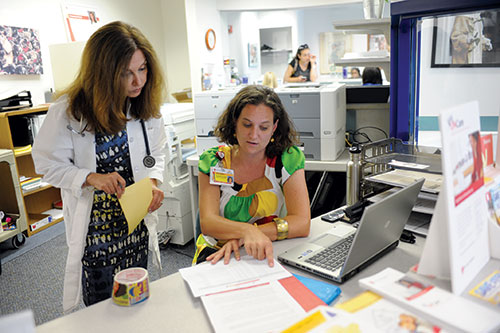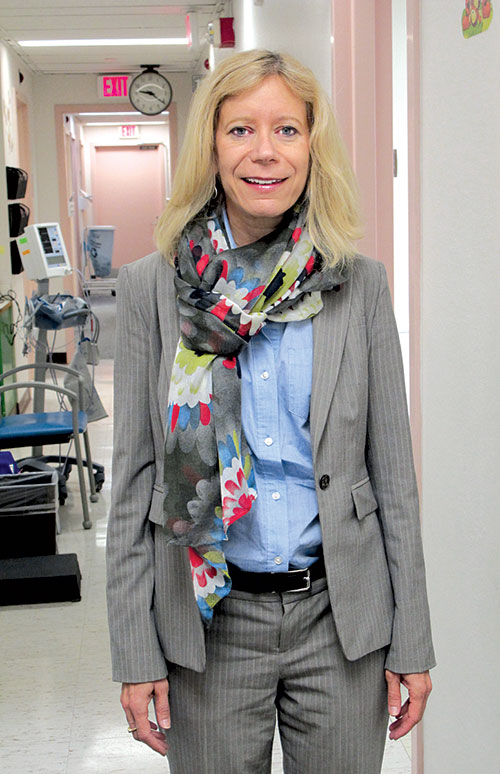discover
Coaching to Improve Health Care for Kids
 Photo: Roadell Hickman
Zane Saalouke and Anna Thornton
Photo: Roadell Hickman
Zane Saalouke and Anna Thornton
Anna Thornton makes house calls to doctors' offices.
Thornton, MPH, is one of five facilitators or "coaches" at University Hospitals Rainbow Babies & Children's Hospital working with more than two dozen pediatric practices in Greater Cleveland. Their goal is to improve preventive care for children. The results, according to a recent analysis, have been dramatic.
"The facilitators are not telling doctors how to practice medicine, but they're helping them improve processes,'' said Sharon B. Meropol, MD, PhD, an assistant professor in the Departments of Pediatrics and Epidemiology and Biostatistics at Case Western Reserve School of Medicine, a pediatrician at UH Rainbow, and lead author of a paper describing the study, which was published in the May issue of the journal Pediatrics.
The processes in turn contribute to better preventive care, as Meropol and her colleagues explain in the journal. Their study examined more than 16,000 patient visits at 30 pediatric and family-medicine offices in Greater Cleveland during a six-month period.
Credit for the original idea goes to the late Leona Cuttler, MD, a nationally acclaimed child-health and policy expert at the university and UH Rainbow, who conceived of the project and was its lead investigator. She died last year before the study was published.
The study examined three areas of preventive care: obesity screening and counseling; lead screening; and fluoride varnish for children under 3 to prevent tooth decay. The facilitators moved through a three-step continuous improvement cycle with the practices: They discussed baseline data that indicated the group's performance level in each of the three areas; they brainstormed with practice members, who then developed their own tailored improvement plan; and they visited the practice weekly to review what worked and discuss what changes to implement the coming week.
For example, some practices needed training in calculating body mass, applying fluoride varnish or enhancing the documentation of services provided.
Meropol expected gains but was surprised at how well and how quickly and eagerly the practices progressed.
Patient care improved in all three categories. The most dramatic jump involved obesity screening: 85 percent of patients received the screening, compared with 3.5 percent at the start of the study.
"The program is really rewarding because it helps improve the quality of care for children and adolescents in the community," said Zane Saalouke, a pediatrician at a UH Rainbow practice in suburban Cleveland. She also is an assistant clinical professor at the medical school.
"We work as a team and share the goal of optimizing the quality of care for children," Thornton said.
Since the completion of the study, facilitators have expanded types of medical services they discuss with practices. For example, during one of Thornton's visits last summer, Saalouke collected an asthma questionnaire from a patient's mother that Thornton had recently provided so parents or guardians could better track the symptoms, frequency, severity and control of asthma—using happy or sad faces—and have more informed conversations with doctors.
Meropol considers the project part of the legacy of Cuttler, who was a professor of pediatrics and the William T. Dahms Chair in Pediatric Endocrinology/Diabetes Excellence at the medical school, and the founding director of the Center for Child Health and Policy and vice chair for Child Health Policy and Community Health, both at UH Rainbow.
The researchers are committed to seeing the coaching program widely disseminated as a national model.
"By making things more efficient and by improving kids' health, we're hopefully improving the value of health-care services,'' Meropol said. —SUSAN VALERIAN






